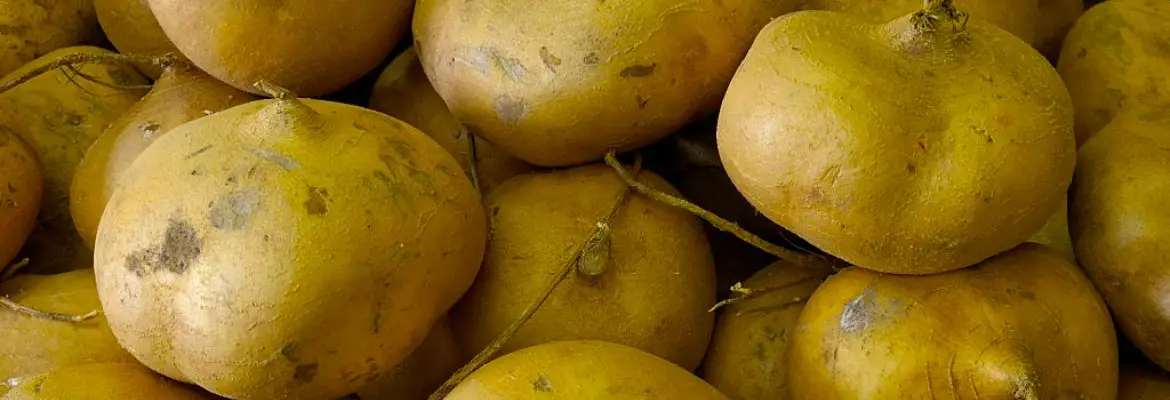Jicama (pronounced “HIK-ka-ma”) can also be referred to as sweet turnip in Singapore, as well as Mexican potato and Mexican turnip based on its shape, appearance, and because of its country of origin.
Jicama, a root vegetable with an oval shape, is related to legumes. These tubers can weigh from one to five pounds, and some can weigh as much as fifty pounds.
The skin is rough and the flesh is juicy, crisp, and white. It has the texture of an uncooked potato but with a crunchier and juicier taste. There is some sweetness to the taste, with a consistency and taste similar to water chestnuts.
You can eat Jicama raw or cooked. Jicama is used as a texture and flavor enhancer in salads and side dishes, often diced or sliced. Its rough brown exterior should be removed with a sharp knife as the outer skin of the Jicama is too thick to peel.
This root vegetable keeps its color and crispness for a long time, and it can also be refrigerated for long periods of time.
A high-protein, low-fat vegetable, jicama is often used in Paleo and Raw diets.
Scientific name of Jicama
Pachyrhizus Erosus
Other names of Jicama
- Yam Bean
- Mexican Potato
- Mexican water chestnut
- Chinese turnip
Nutrition facts of Jicama
*Serving size = 100 grams = 3.55 Ounces = 1/2 cup
*DV= % Daily Value (%DV indicates how much nutrients contribute to a person’s daily diet from a serving of a food. DV assists you in determining whether or not a serving of food is high or low in a particular nutrient.)
| Nutrient | Amount | Unit | DV |
|---|---|---|---|
| Calories | 38 | KCAL | |
| Fat | 0.09 | GRAM | 0% |
| Protein | 0.72 | GRAM | 1% |
| Carbohydrate | 8.82 | GRAM | 3% |
Calories by source in Jicama:
- Calories by carbohydrate in Jicama = 90%
- Calories by fat in Jicama = 2%
- Calories by protein in Jicama = 8%
Fats and Fatty Acid profile of Jicama:
- Polyunsaturated fat (PUFA) in Jicama = 62%
- Saturated fat (SFA) in Jicama = 30%
- Monounsaturated fat (MUFA) in Jicama = 8%
Detailed vitamin profile of Jicama, vitamin A, vitamin B12, vitamin B6, vitamin C, vitamin D, Folate, Niacin, Thiamin, and Riboflavin is shown in the chart at the end of the article.
Detailed mineral profile of Jicama, Sodium(Na), Calcium(Ca), Copper(Cu), Iron(Fe), Magnesium(Mg), Selenium(Se), Phosphorus(P), Potassium(K) and Zinc(Zn) is shown the chart at the end of the article.
Availability of Jicama
- Jicama is available round the year with peak season coming in fall.
Complete nutrition facts of Jicama
Click on the link HERE to download high quality, high resolution and print ready PDF version of the Jicama nutrition chart/infographic.


